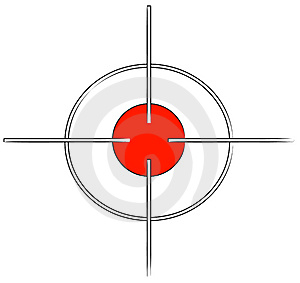With the holidays now behind us, and the reality of a new season beginning to set in, consider thinking about your body composition as one of the primary areas where improvement can be made during the New Year. Athletes typically think about body composition in a very one-dimensional way. Most do not get too far beyond considering only their body weight and/or the percentage of their body weight that comes from fat. Outlined below is a more effective, sport-specific approach to looking at body composition, using traditional metrics in a more synergistic way.
The two primary metrics to consider are Body Fat Percentage (BF%), and Body Mass Index (BMI). There is limited sport specific value in using these metrics separately. However, when used in conjunction with one another, they can provide deep insight into sport related limiters, which go well beyond the impacts of only body weight on race speed and/or vanity.
The first step in carrying out a detailed evaluation of body composition is to take a fairly accurate measurement of body fat. There is no need to go crazy in getting an exact number in this context; as a number that is within plus or minus 1.5% will be more than appropriate. Through work with a dietitian and/or coach most athletes should target an approximate race day BF%. Assuming this BF% is about as low as the athlete should safely be, based on age and gender, a goal body weight should then be determined under the assumption that this goal BF% can be reached via dietary manipulation. For example, if an athlete currently weighs 160 pounds with a BF% of 12 percent, and has an optimal/goal BF% of 8 percent, we would assume that the athlete will lose 4 percent of his body weight through dietary manipulation. To determine this athlete's goal race day body weight we calculate 4% of 160 (.04*160), which is about 6 pounds. Assuming that this athlete does not lose a significant amount of muscle during the weight loss phase, they can expect to race at about 154 pounds and 8 percent body fat. This is the athlete's Lean Adjusted Body Weight. This process, by itself, is a powerful tool in helping to determine an athlete's optimal race weight, as well as the impacts on performance that may be seen by reaching this optimal body weight. Assuming that this goal BF% has been properly determined and that there has not been a significant loss of strength, due to a loss of lean muscle mass, each pound of lost body weight roughly equates to a 3 second/pound/mile improvement in running pace and about 3 seconds/pound for every four miles on the bike. With this in mind, once the above athlete has shed these six pounds of body fat, an improvement of about 18 seconds/4 miles and 18 seconds/mile, can be expected on each the bike and the run paces.
Integrating BMI into the evaluation of an athlete's body composition, alongside BF%, adds a great deal of value to the process, because it adds the ability to consider the athlete's muscle-mass content. Consider the idea that every sport has it's own optimal BMI number, where strength does not act as a limiter to performance and is not in excess of what is needed. If an athlete's lean adjusted body weight results in a BMI that is below the sport's requirement, then there is a good chance that strength acts as a limiter to performance. In this case, strength should be a primary target of the athlete's season plan, along with the appropriate dietary changes to support muscle mass development. To calculate lean BMI, multiply the lean adjusted body weight by 703, and then divide this number by the square of the athlete's height, in inches. If this lean adjusted BMI is much above that required for the selected sport, then it is likely that the extra muscle mass being carried around is not needed for optimal performance in the sport and actually slows the athlete down. In my experience for triathlon, the optimal lean adjusted BMI is about 20.0 for females, and 21.0 for males. Remember this metric only has value when combined with BF%, to create a lean adjusted body weight for the BMI calculation. For example, if BMI is calculated, for an athlete with significant body fat, without first being adjusted for lean body weight, it will result in an artificially high number, due to significant body fat, with no correlation to the sport-specific strength evaluation. It should be noted that a sport such as rowing would have a higher optimal BMI, due to the significant strength component required.
When evaluating the sport-specific body composition of a new athlete, the typical process is to 1) determine the athlete's current BF% and, with the assistance of a good coach or dietitian, determine a target race day BF%; 2) adjust body weight assuming that this goal will be reached; 3) calculate BMI with this lean adjusted body weight; 4) evaluate this BMI versus the aforementioned sport-specific ideals (Triathlon: 20.0 Females, 21.0 Males); 5) if above or below these ideals, consider manipulating the athlete's training/nutrition program, with the goal of working towards these ideals. How to go about reaching these goals, in terms of muscle mass gain/loss, is beyond the scope of this particular writing, as it can be very specific and quite complicated. Regardless, the process outlined above sheds light on how an athlete may be able to squeeze additional speed out of an already sound training program, and further understand where their specific limiters may lie. It is only when BF% and BMI are combined that a truly powerful tool for evaluating potential athletic limiters is apparent.















Comments